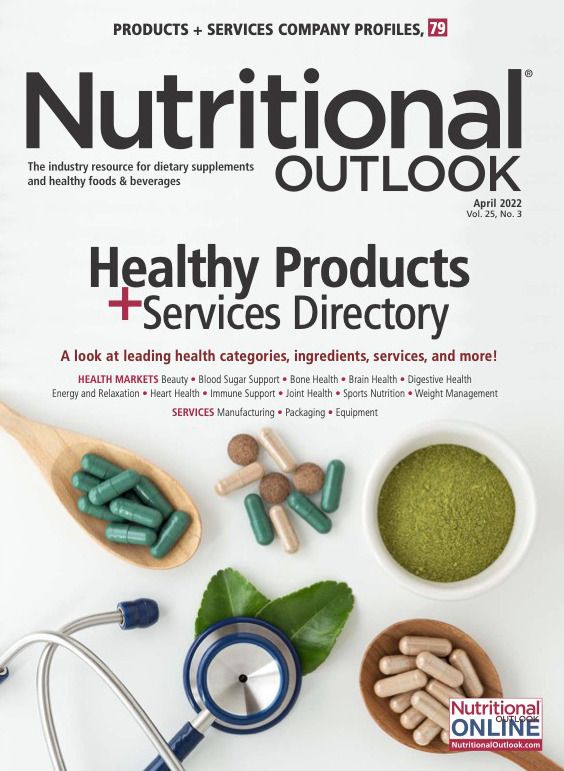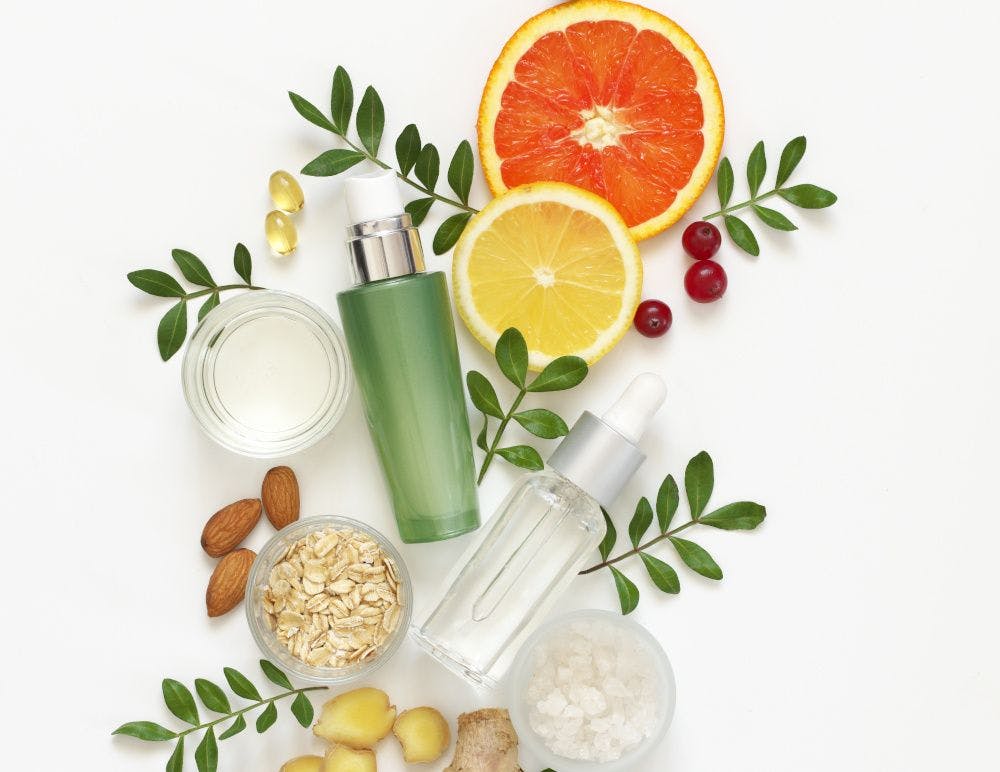Can you fix what’s broken? How are supplement manufacturers handling equipment maintenance and repair during a supply chain crisis?
It’s a scenario that’s become all too real and scary for supplement manufacturers and their equipment manufacturers thanks to today’s global supply chain crisis.
Photo © Stillfx - Stock.adobe.com

Equipment breaks down. Equipment needs maintenance. It’s an expected part of manufacturing. But what happens when replacement parts—or other key cogs of production—aren’t readily available to get you back online?
It’s a scenario that’s become all too real and scary for supplement manufacturers and their equipment manufacturers thanks to today’s global supply chain crisis.
“Yes, the global pandemic has certainly disrupted the supply chain,” says Rene Stuijt, business unit manager for Cremer (The Netherlands), a global supplier of counting machines and packaging equipment. “Whether a domestic or international supplier, the vast majority of OEMs have felt the effects of the pandemic to some extent.”
Lead Times Are Long, Costs Up
The fact that demand for dietary supplement products—and thus dietary supplement manufacturing—is greater than ever puts additional strain on manufacturers and OEMs dealing with a supply chain mess.
“Like most other industries, manufacturers of nutritional supplements have faced significant disruptions in all aspects of their supply chain, including raw materials, equipment, and support services, since the beginning of the pandemic,” says John Carey, vice president of sales for capsules and equipment expert ACG (Mumbai, India). “These challenges were further magnified by the rapidly increasing demand for supplements—in particular, those in the immune health category.”
Whether awaiting newly ordered equipment or replacement parts, chances are clients are waiting longer for deliveries, as lead times have increased both for clients and the OEMs themselves.
“Manufacturers of equipment have also been affected by the challenges posed by the increased demand for their machinery, parts, and services,” says Carey. “Delivery times for components and materials required to produce the machinery have increased.”
Erin Dillon, media and marketing coordinator for Charles Ross & Son Co. (Hauppauge, NY), a supplier of mixing, blending, and dispersion equipment, says, “Our production schedules have been impacted to some extent as certain items like some motors, seals, bearings, and limit switches had unusually long deliveries for a time. The disruptions have been somewhat random.”
Other shortages are also making it difficult. As Stuijt points out, “Notably, parts and raw materials are only a portion of the disruptions. A shortage of skilled workers and increased demand have combined to place severe strain on international shipping and transportation, from the sea and air vessels to the ports of entry, customs, and even truck drivers.” Equipment manufacturers, like everyone else, have to deal with these challenges.
Uncertain Times
When will things get better? “It’s difficult to say, but the pandemic combined with inflation, global labor issues, and extreme weather events means we are expecting disruption to the nutraceutical supply chain for the foreseeable future,” Carey predicts.
The best companies can do is hope things get better soon—and do what they can to deal with obstacles in the meantime. And they are. Carey says, “Despite the challenging environment, we’re working collaboratively with our customers and suppliers to ensure the best possible outcome for all.”
Says Stuijt: “While it is always difficult to predict when an issue like this will abate, with the effects of COVID trending down of late, the entire industry is hopeful these pitfalls will begin to subside in the near future. I would assess the overall mood as ‘cautiously optimistic.’”
Companies also know the situation could change at any time. For instance, says Dillon, “Though pandemic restrictions are easing up, the war in Europe is causing uncertainties that will add more strain on the global supply chain.”
Proactive and Prepared
For now, companies should be planning ahead—for everything. Forecast ahead, and have clients do the same, for equipment, parts, anything that will be needed in the future, and projecting far out.
“Manufacturers should adopt a proactive approach to estimating production forecasts for their future equipment needs,” Dillon advises. “That way, they will be ready to adjust to short- and long-term opportunities and growth.”
Constant communication with your OEM is key, Carey adds. “To get the most out of their suppliers, companies should look to proactively communicate with their equipment partners about their requirements as early as possible. This way, suppliers can plan better and make sure their equipment needs are met without any disruption to their operations—especially in times of high demand.”
Stuijt agrees that planning ahead is most critical for nutraceutical manufacturers and contract manufacturers today, adding: “Most OEMs and equipment manufacturers do not have ‘off the shelf’ solutions waiting to be sold, and with the increase in supply issues and the decrease in workforce participation, now more than ever it is crucial to plan projects well in advance. This will give OEMs and manufacturers an opportunity to deliver projects in a timely manner.”
More companies are investing in equipment maintenance and parts to ensure they have these on hand when the need arises. “Engaging in annual maintenance contracts can ensure the reliability of the production equipment as well as coordinating maintenance timing to minimize downtime,” Carey advises. “Equipment failure due to lack of maintenance results in much higher repair costs and greater downtime.”
ACG—in addition to enhancing its now-standard remote services and support capabilities, including web-based video conferences for mechanical troubleshooting—recently launched what it describes as “a new predictive maintenance solution” called Smart Connected. This system “helps companies benefit from predictive maintenance, reducing downtime through anticipation of equipment service in advance of an emergency, and lowering manufacturing costs through improved efficiency in production,” Carey says.
“Specially designed to help reduce unplanned equipment downtime for manufacturers, Smart Connected is an innovative approach that enables optimized machine performance and predictive maintenance through data analytics,” Carey explains. “The technology combines real-time data across multiple data points, accessible from anywhere in the world, with alarms and alerts as well as proactive support from ACG’s team of experts.”
OEMs are also suggesting alternatives in the interim—for instance, at times recommending standard machine designs and rental options.
Dillon says that in addition to ensuring its replacement parts are in stock, Ross maintains what she calls “the world’s largest multimillion-dollar inventory of new and rebuilt mixers, available for immediate rental or purchase. This has been crucial in meeting customer demands in the nutraceutical, food, pharmaceutical, and personal care industries, all of which remained very active throughout the pandemic.”
Over at ACG, Carey explains, “We have proactively changed our approach to sourcing materials, both by placing orders to our suppliers earlier as well as increasing house inventories of materials necessary to machine production. In addressing the increasing demand for machinery, one of our strategies has been to increase the number of ‘ready to deliver’ standard machines, thereby enabling our customers to take delivery of a new production unit in weeks, rather than months.”
Being resourceful also means being flexible—and here, OEMs are helping show clients the way. Says Dillon at Ross: “As supply chain issues continue to evolve, manufacturers will have to get creative and think of new ways to utilize and maximize their equipment. For example, mixers that have the ability to blend a variety of materials with different viscosities or densities—and the flexibility to quickly scale up as demand increases—certainly offer an advantage.”
“Another option,” she continues, “is to think about whether semi-continuous mixing is right for your process. Many mixing systems can be supplied in a ‘change can’ configuration. One mix can (vessel) could be at the loading stage, another under the mixer, another at the discharge step, and yet another at the cleanup stage when multiple interchangeable vessels are used with a single mixer. This setup makes the most of both machine and workers.”
Finally, “Customizations for discharge of finished product and CIP washdown can reduce downtime and labor costs.” The purpose of Ross’s Testing and Development Center, she says, is to help companies make the right equipment selection and to modify designs as needed to help manufacturers deal with “pain points” and improve their production times.
Steve Holtby, president and CEO of manufacturer Soft Gel Technologies Inc. (Los Angeles), also sees the worth in reevaluating the equipment you already have. For instance, he says, companies might first want to think about how they can improve their existing equipment before sinking capital into new equipment.
“Don’t trade a ‘known’ for an ‘unknown,’” he advises. “You know the shortcomings and challenges of your current equipment. You know what it does well and what it doesn’t. Going with new equipment will be a learning curve for maintenance and operations personnel on several fronts.”
Existing equipment can be improved in numerous ways. Holtby advises, “Evaluate mechanical and thermal systems to test function against manufacturer standards. If found deficient due to age and wear, consider a rebuild or upgrading to meet or surpass OEM specs. Compare that against what is currently being offered on the market and evaluate if it makes more sense to rebuild or replace. Occasionally, rebuild costs and cost of downtime to perform that service would cost more than replacement cost, and replacement cost usually involves less downtime.” Also, he says, “See if modern technical solutions would allow you to retrofit existing equipment to bring it more in line with current gear on the market. There may be some truth to ‘they don’t make them like they used to’ in some situations. Retrofitting modern motors and drives on an old, well-built, heavy-duty machine frame could be ‘the best of both worlds.’”
Then again, he says, “However, if you find yourself constantly spending money on an old machine, it’s still an old machine at the end of the day. It needs to be evaluated from an aging and depreciation perspective to see if it makes sense to go new and what that does for the organization. A good question to ask is: What do you stand to gain by making that investment?”
Lessons Learned
One of the biggest lessons companies of all kinds are taking away from the supply chain debacle is to bring operations in house or as close to home as possible. This, in turn, has increased the demand for equipment.
Carey says, “There are multiple approaches organizations can take to shore up their security of supply. One that many nutraceutical companies are taking is to bring manufacturing in house and reduce their outsourcing. By investing in new equipment and bringing more of the manufacturing process in house, manufacturers are in greater control of their costs and timing. For example, outsourcing the granulation and tablet-coating processes can limit a company’s ability to control inventory and respond quickly to market demand. By bringing these processes under one roof, nutraceutical manufacturers can build more control and flexibility into their supply chains.”
Equipment suppliers that manufacture their own parts in house are also reaping the benefits during these difficult times. “The greatest takeaway from the last two years is to be less dependent on overseas supply chain where possible. Partnering with reputable OEMs with large inventories stateside could help alleviate production issues,” Dillon says. For instance, she notes that Ross has five manufacturing facilities in the U.S., including its own controls division, where it fabricates most of its components, keeping it in house “so we’re not as reliant on third-party vendors.”
And Stuijt says that Cremer “has positioned ourselves in a very unique and advantageous position because we manufacture most of our parts in house. This has allowed us to remain far more in control during the pandemic, as not having to rely on a host of outside vendors for parts and raw materials breeds efficiency at a time like this.”
As for the vendors Cremer does still use, these are “longstanding partners and know the demands of our equipment and our quality needs. Here, it’s solid, ingrained relationships that help mitigate delays and disruptions,” says Stuijt.
Silver Lining
The knowledge gained during these tough times is hard-won but will ultimately leave the industry in better shape tomorrow.
“I believe that this disruption will be a learning experience for many as it will highlight the importance of planning ahead and working with your trusted partners well before a project is ready to come to fruition,” Stuijt says. “I think this will actually benefit the industry long-term and leave a positive effect on the way we do business and interact.”
ACG’s Carey says, “We expect that the lessons learned over the pandemic have improved the industry’s ability to adapt more rapidly to changing market conditions. It will also be interesting to see how the nutraceutical equipment supply chain continues to evolve. In essence, I think the key lesson that we are learning is the importance of flexibility, preparation, and partnership. The market is fast-changing, even when a global pandemic isn’t creating increased demand for health solutions like supplements.”
At the end of the day, making sure your equipment is top notch is a necessity in order to deal with future challenges that no doubt lie in wait. “Maximizing performance is always a good strategy, whether it’s with new or old equipment,” says Holtby. “You’ll be in a better position when you can reduce human capital dependency. The fastest option with the lowest human capital required is the best strategy. For example, if you have a machine that can be run with one person instead of two, and can run faster than the current speed and still produce a quality (or better) product, it’s clear why this is the best strategy.”

Prinova acquires Aplinova to further increase its footprint in Latin America
April 7th 2025Prinova has recently announced the acquisition of Brazilian ingredients distributor Aplinova, which is a provider of specialty ingredients for a range of market segments that include food, beverage, supplements, and personal care.

























